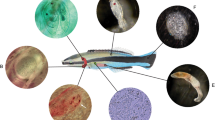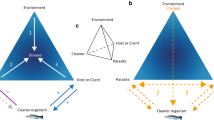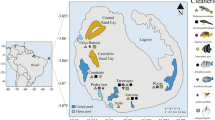Abstract
In fish cleaning associations, the net benefits gained by clients and cleaners from cleaning have still not been clearly evaluated. In particular, the role of ectoparasitism and the importance of client mucus characteristics remain unclear for most cleaner fish species. This paper investigates the cleaning behaviour of the Mediterranean cleaner wrasse Symphodus melanocercus, based on observations, cleaner gut contents, client ectoparasites and mucus characteristics. We showed that this fish is a specialised cleaner fish, similar to some other tropical cleaner species. Gnathiid isopod larvae and caligid copepods represented a large proportion of the items preyed on by S. melanocercus. Although their feeding activity was related to their client ectoparasite load, it was also significantly linked to client mucus load, which would indicate that the cleaning behaviour of S. melanocercus is not purely altruistic. Finally, as client visit to cleaning stations is related to their ectoparasitism, we propose that ectoparasite removal is likely to be a benefit for the client fishes of S. melanocercus.
Similar content being viewed by others
Author information
Authors and Affiliations
Additional information
Received: 28 July 2000 / Accepted: 8 November 2000
Rights and permissions
About this article
Cite this article
Arnal, C., Morand, S. Importance of ectoparasites and mucus in cleaning interactions in the Mediterranean cleaner wrasse Symphodus melanocercus. Marine Biology 138, 777–784 (2001). https://doi.org/10.1007/s002270000494
Issue Date:
DOI: https://doi.org/10.1007/s002270000494




